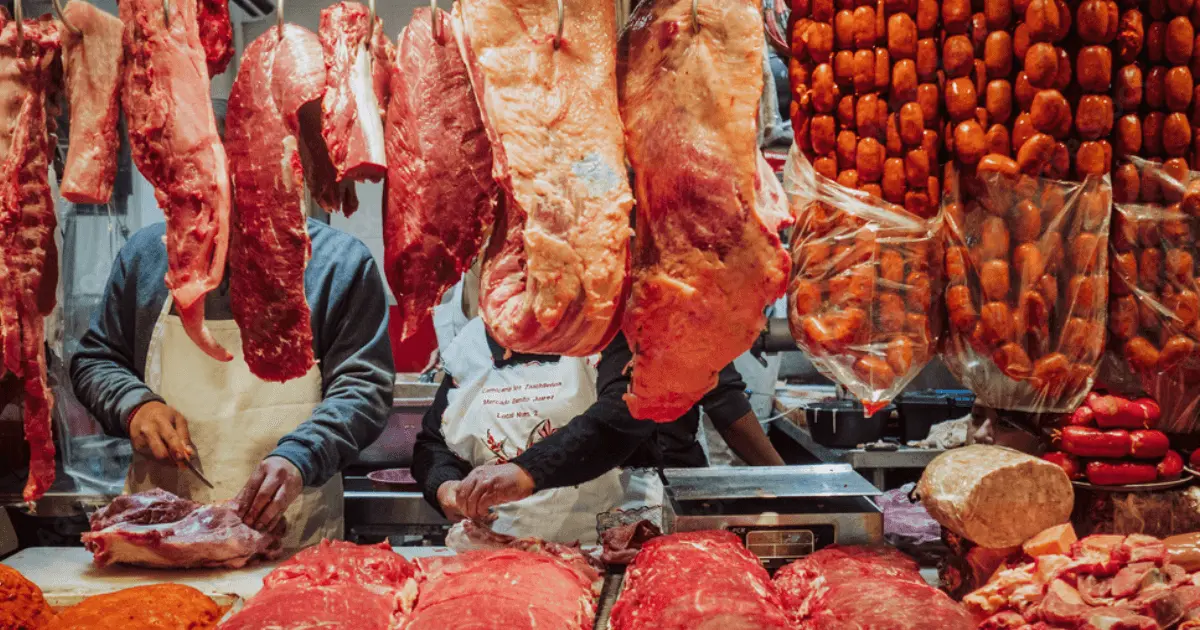Obtain the very best Bargains on Fresh Meat at Bagley Farms Meat Market Edwardsville IL
Obtain the very best Bargains on Fresh Meat at Bagley Farms Meat Market Edwardsville IL
Blog Article
Reveal the Art of the Butcher's Cut in a Modern Meat Market
In the ever-evolving landscape of contemporary meat markets, the butcher's cut has transcended its standard origins, combining old-time workmanship with modern techniques. Today's butchers are not merely processors of meat; they are well-informed artisans that emphasize sustainability and moral sourcing. Their know-how in selecting and preparing cuts customized to specific culinary requirements supplies an unrivaled dining experience. What genuinely sets the modern butcher apart is their capability to build a much deeper link in between customers and the beginnings of their meat. Just how do these masters equilibrium custom with advancement, and what ramifications does this have for the future of meat consumption?
Advancement of Butchery Techniques
The development of butchery techniques shows an abundant tapestry of advancement and adjustment driven by developments in innovation, adjustments in consumer demand, and a deeper understanding of meat scientific research. Historically, butchery was a craft passed down through generations, with methods developed over centuries to make best use of return and taste. Nonetheless, the commercial change ushered in automation, transforming typical practices and making it possible for large-scale handling.
The mid-20th century saw butchery methods additionally improved by scientific insights right into muscle mass biology and meat aging, enhancing both tenderness and preference. Innovations like vacuum product packaging and refrigeration expanded item shelf-life, permitting butchers to diversify offerings and improve quality assurance. This period likewise noted the surge of specific equipment, such as band saws and meat slicers, which raised accuracy and effectiveness in meat processing.

Digital systems now help in tracking pet provenance and maximizing cuts to fulfill details client preferences. Furthermore, a renewal in artisanal butchery has emerged, blending traditional abilities with modern-day expertise to provide to customers looking for moral and lasting meat choices.
Understanding Meat Cuts
Understanding the ins and outs of meat cuts is essential for both butchers and consumers looking for high quality and worth. Each cut comes from a different component of the pet, presenting special tastes, appearances, and food preparation approaches - bagley farms meat market edwardsville il. Proficiency of these differences not only improves culinary experiences but also makes the most of the energy of each carcass. For butchers, specific cuts reflect ability and regard for the craft, ensuring marginal waste and optimum return.

Comprehending muscle composition is crucial; muscular tissues made use of extra regularly by the animal often tend to be tougher and are best matched for slow-moving cooking approaches, while less-used muscular tissues, like those discovered in the loin, are more tender and suitable for grilling or roasting. Familiarity with these differences encourages consumers to make informed options, boosting their cooking endeavors.
Choosing Top Quality Meat
Selecting the ideal meat includes even more than simply picking an aesthetically attractive piece from the display. bagley farms meat market edwardsville il. The art of selecting top quality meat calls for a critical eye and knowledge of details features that signify freshness and quality. First of all, take note of the shade; beef ought to have a bright, cherry-red tone, while lamb must exhibit a soft pink tone, and pork a pale pink. This indicates the meat is fresh and hasn't been subjected to oxygen for as well lengthy.
Secondly, consider the marbling, which refers to the white streaks of fat within the muscular tissue. Appropriate marbling is a vital sign of tenderness and taste, as it thaws throughout cooking, improving the meat's juiciness. Keep in mind, higher marbling commonly correlates with exceptional top quality cuts, such as USDA Prime.
Texture is one more vital factor; meat should feel strong additional hints to the touch, not slimy or overly soft. Furthermore, be mindful of the fragrance. Fresh meat ought to have a tidy, neutral smell, devoid of any type of sour or repulsive odors.
Coupling Cuts With Cooking Techniques

Conversely, harder cuts like brisket and chuck roast are rich in collagen, which damages down right into gelatin when cooked slowly. These cuts are suitable for braising or slow-moving roasting, permitting the meat to tenderize with time and develop deep, intricate flavors. Cuts such as short ribs and pork shoulder get on well with slow-cooking methods, where expanded cooking times transform their durable textures into succulent dishes.
Lamb shanks and oxtail, which call for prolonged cooking to soften, are ideal prospects for stewing or sluggish simmering. These techniques coax out rich, hearty flavors while keeping dampness. By comprehending the unique characteristics of each cut, cooks and home cooks alike can boost their culinary creations, making certain each recipe is both check that satisfying and memorable.
The Butcher's Duty Today
Navigating the advancing landscape of the modern meat market, the butcher's function today expands beyond simple prep work of cuts. Contemporary butchers are culinary craftsmens, instructors, and supporters for sustainable practices. They connect the space between the ranch and the fork by making certain ethical sourcing, recognizing pet husbandry, and prioritizing openness in the supply chain. This change shows the expanding customer demand for top quality over quantity, where provenance and pet well-being are extremely important.
In addition to crafting exact cuts, butchers currently engage straight with consumers, supplying cooking advice and tailoring selections to fit specific needs and preferences. Their proficiency in meat aging, marbling, and taste profiles encourages customers to make informed choices, enhancing their cooking experiences. This tailored service exhibits the butcher's progressing duty as a relied on advisor in the kitchen.
In addition, butchers are critical in reducing waste, utilizing entire animals to produce diverse items such as sausages and stocks. This extensive technique not just respects the pet however also straightens with modern sustainability objectives. In this method, the modern-day butcher embodies try these out both custom and development, adjusting to an ever-changing market while preserving the virtuosity and honesty of their craft.
Final Thought
Proficiency in understanding diverse meat cuts and quality signs empowers butchers to offer enlightened recommendations, aligning certain cuts with optimal cooking approaches. By honoring historical methods while accepting contemporary demands, the butcher's duty remains crucial in today's sophisticated meat market.
Report this page